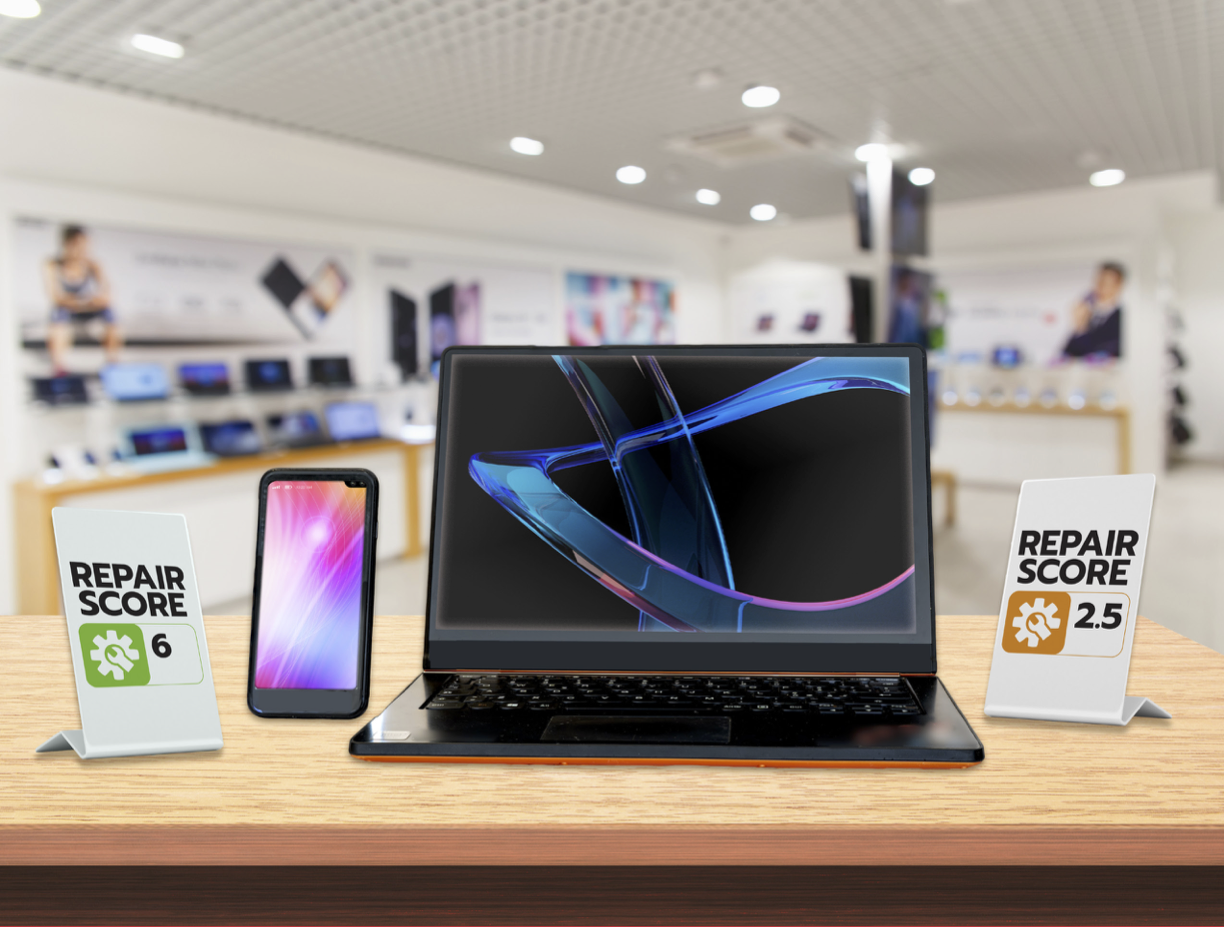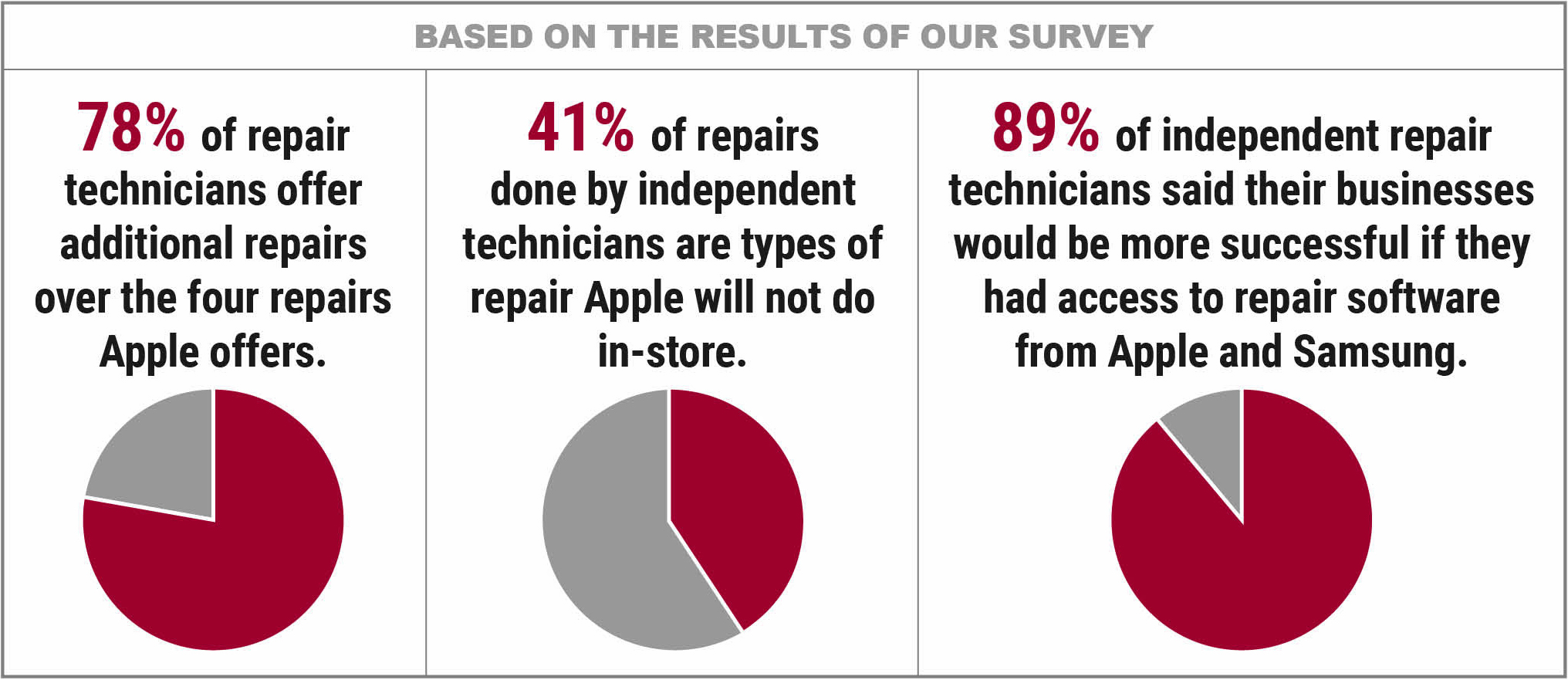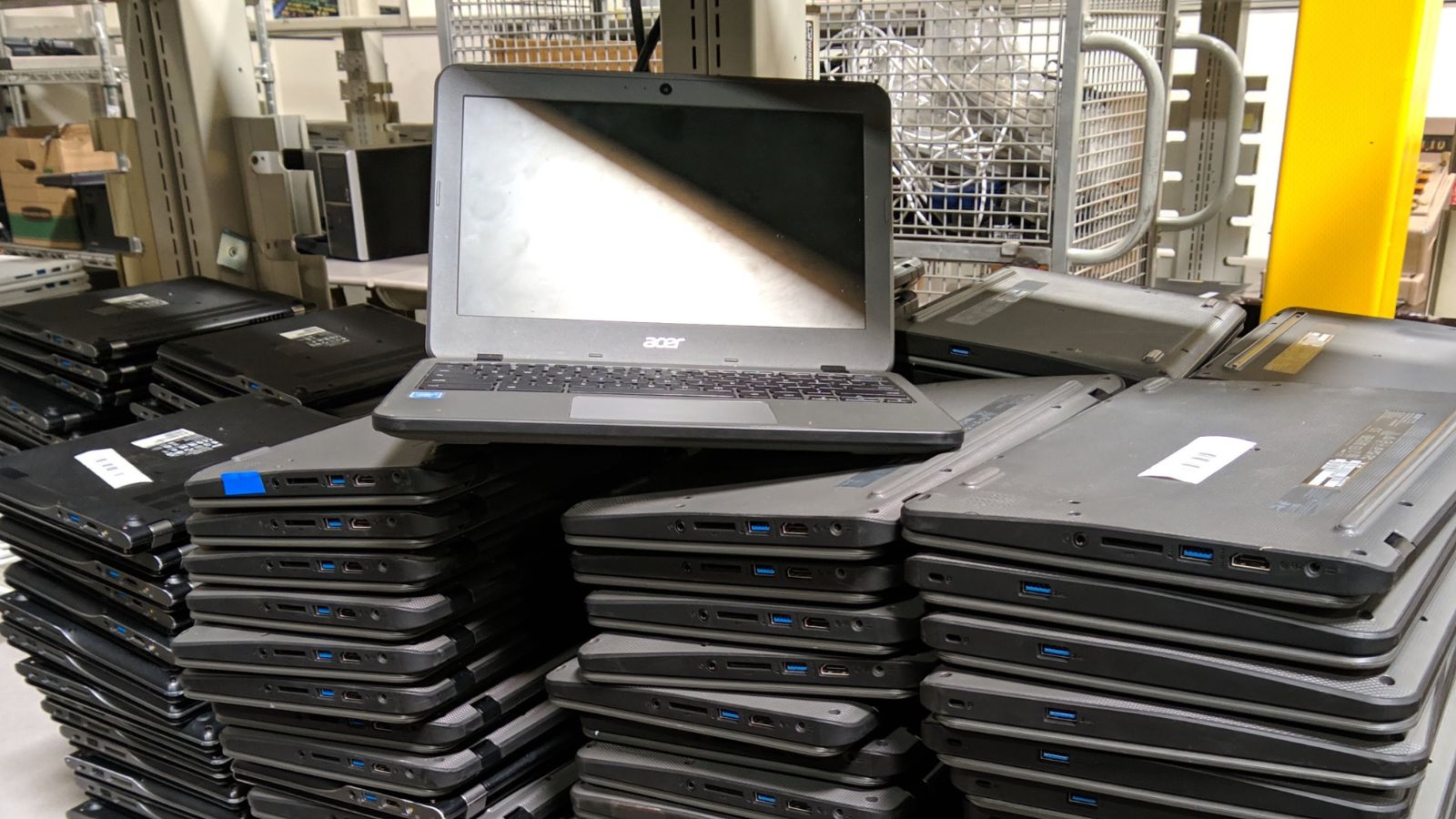
The Fix Is In
We rely on our smartphones. When they break, we need them fixed — fast. Unfortunately, there are numerous barriers to fixing our phones. Manufacturers might offer a dearth of repair options or digitally lock our phones so we can’t repair them. And when we can’t fix them, and have to get rid of them and buy new ones, that has a big consequence on our environment. According to the new report, “The Fix Is In” by U.S. PIRG Education Fund, independent shops offer repairs that some manufacturers won’t.
Downloads
For many of us, our smartphones are a critical part of our daily lives. Juggling our schedules, taking photos of our travels and family events, handling our emails, giving us directions, or connecting us with our friends, clients or colleagues. When our phones break, we want them fixed – fast.
Unfortunately, there are numerous barriers to fixing most smartphones. Apple, Samsung, LG and other smartphone manufacturers don’t make diagnostic software, manufacturer original spare parts, or repair documentation available to anyone outside of their authorized repair centers.[i] These authorized repair providers might be a long distance away from many consumers, and they might be severely limited in the repair options that will provide. For example, Apple told Congress last fall that they offer only four varieties of repairs in-store for their phones[ii] – battery, screen, camera and speaker replacements.[iii]
When the companies that make these phones limit repair options, it can put consumers in a bind. Having your choice of repair technician with access to repair tools and spare parts would help keep costs low and expand consumer options.
Working with iFixit.com, U.S. PIRG Education Fund surveyed independent technicians, and 302 phone repair technicians responded. Our survey sought to find out more about what repairs their businesses are doing, and how that compares to the repairs manufacturers make available.
Our survey found that 78% of repair technicians offer additional repairs over the four repairs Apple offers, and overall, 41% of repairs done by independent technicians are types of repair Apple will not do in-store. Additionally, 89% of independent repair technicians said their businesses would be more successful if they had access to repair software from Apple and Samsung.[iv]

When people can’t fix their phones – or can’t find a repair technician who is willing and has the necessary parts and information to do the job – they must get a new phone. And, in addition to the hit to your pocketbook for a new device, manufacturing a new phone takes a toll on the planet.
Making fewer new phones would make the biggest environmental impact
Researchers estimate that 85%[v] of the climate impact of a smartphone comes from manufacturing, the rest for the use phase – and manufacturing and shipping a single phone produces the planet-warming equivalent of 122.7 pounds of carbon dioxide.[vi] A single iPhone 6 takes 295 lbs of raw minerals – 75 lbs of ore ore and 220 lbs water – to produce.[vii]
Given that Americans purchase some 161 million new smartphones each year,[viii] that means our cell phone habit takes some 23.7 million tons of raw material to satisfy – that’s like consuming an Empire State Building equivalent in material weight every 6 days. If we held onto our phones 1 year longer on average, the emissions reductions would be equivalent to taking 636,000 cars off the road each year and would reduce manufacturing material demand by 42.5 million pounds per day – which would be like cutting a jumbo-jet’s weight in raw material use every 17 minutes.
According to the U.S. EPA, Americans dispose of 416,000 cell phones per day.[ix] Even if these phones were recycled – and indications are that most are not[x]– the clear environmental imperative is in reducing the number of new phones we are forced to produce.
[i] Confirmed in personal communication with Gay Gordon-Byrne, Executive Director of Repair.org, June 2019.
[ii] Kyle Andeer, Apple, Inc., responding to questions from House Judiciary Subcommittee on Antitrust, Commercial and Administrative Law, https://docs.house.gov/meetings/JU/JU05/20190716/109793/HHRG-116-JU05-20190716-SD036.pdf (page 9)
[iii] AUTHOR’S NOTE: These four repairs refer to the kind of components they replace, which they declared in writing to Congress. We know that Apple stores will also, for example, attempt to clean lint out of a charge port, though do not replace that port.
[iv] AUTHOR’S NOTE: Samsung and Apple make up more than 70% of U.S. cell phone sales.
[v] Mark Wilson, “Smartphones Are Killing The Planet Faster Than Anyone Expected” Fast Company, March 27, 2018. https://www.fastcompany.com/90165365/smartphones-are-wrecking-the-planet-faster-than-anyone-expected
[vi] “The global carbon footprint of mobiles,” The Restart Project, accessed February 2020. https://therestartproject.org/the-global-footprint-of-mobiles/#fn-7380-1
[vii] Brian Merchant, ” Everything That’s Inside Your iPhone,” Vice, August 15, 2017. https://www.vice.com/en_us/article/433wyq/everything-thats-inside-your-i…
[viii] “Number of smartphone unit shipments in the United States from 2013 to 2023,” Statista, accessed February 2020. https://www.statista.com/statistics/619811/smartphone-unit-shipments-in-…
[ix] Charmaine Crutchfield, “Smartphone disposal poses security risks, experts warn.” USA Today, November 10 , 2014. www.usatoday.com/story/news/nation/2014/11/10/smart-phone-security-risks…
[x] Vianney Vaute, “Recycling Is Not The Answer To The E-Waste Crisis,” Forbes, Oct. 29, 2018. https://www.forbes.com/sites/vianneyvaute/2018/10/29/recycling-is-not-the-answer-to-the-e-waste-crisis/#6db917847381
Topics
Find Out More


Full Letter— Parents, environmentalists to Google: stop Chromebooks from expiring this summer

Green schools guide
